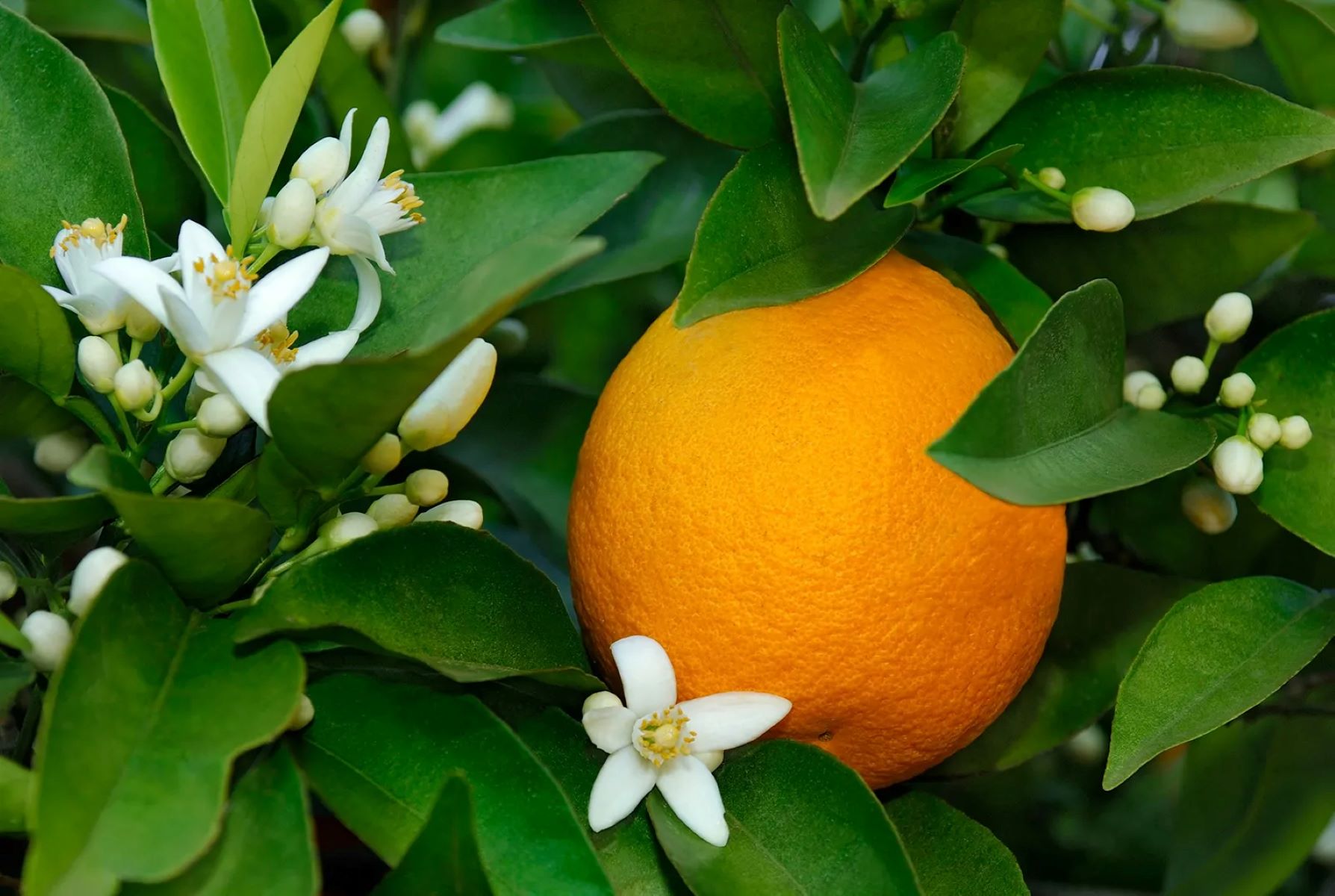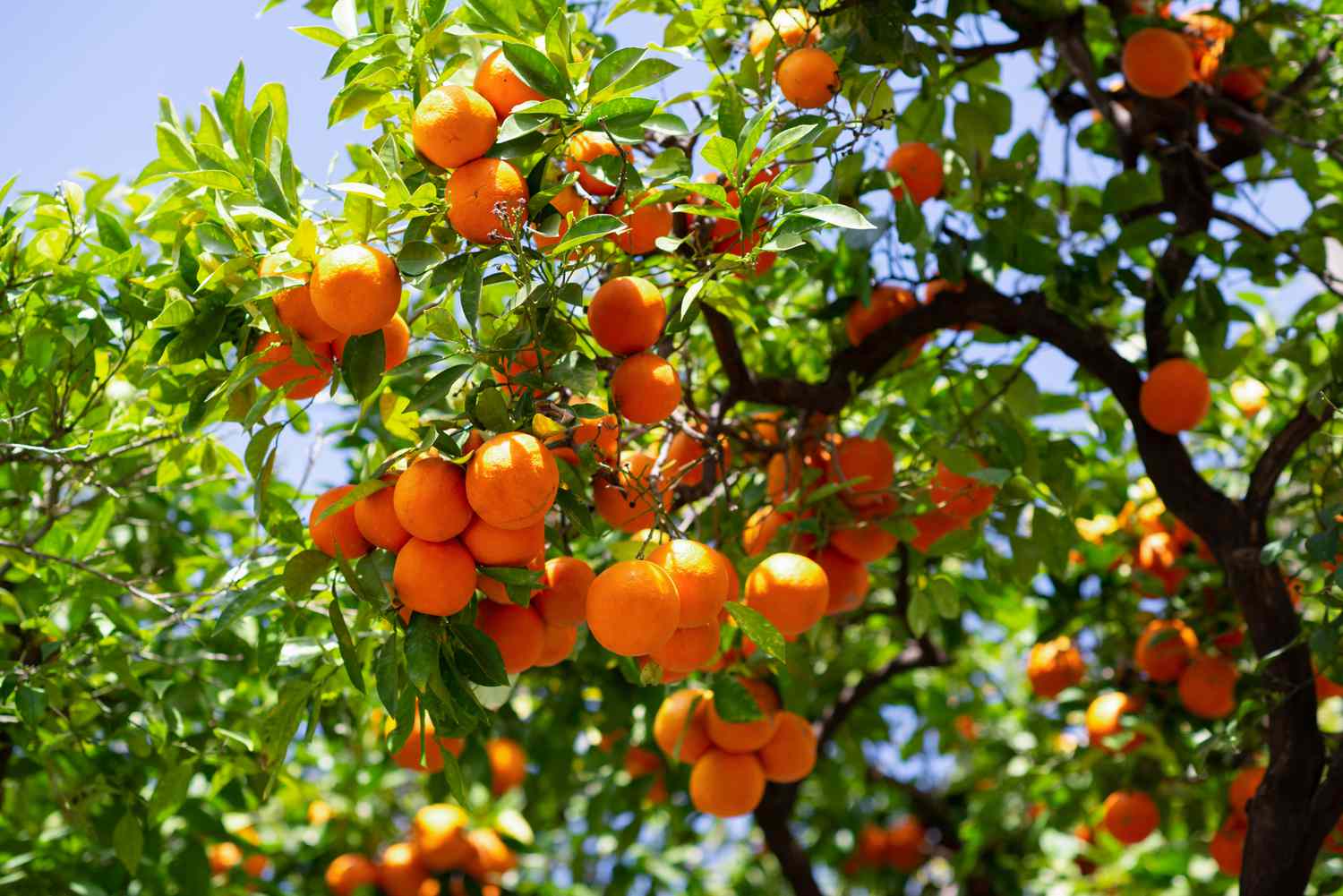Home>Garden Essentials>Why Don’t Oranges Have Seeds


Garden Essentials
Why Don’t Oranges Have Seeds
Modified: May 27, 2024
Discover the secret behind seedless oranges in your garden. Find out why these delicious fruits don't have seeds and how to grow them in your own backyard.
(Many of the links in this article redirect to a specific reviewed product. Your purchase of these products through affiliate links helps to generate commission for Storables.com, at no extra cost. Learn more)
Introduction
Welcome to the fascinating world of oranges, where the juicy, citrusy goodness is a staple in many households. However, have you ever wondered why some oranges don’t have seeds? It’s a question that has puzzled many garden enthusiasts and fruit lovers alike.
In this article, we will explore the intriguing phenomenon of seedless oranges. We will delve into the botanical explanation behind their development, the cultivation techniques used to propagate them, and even touch upon the controversial topic of genetic modification. So, let’s embark on this citrusy journey together!
When we think of oranges, we typically envision a fruit with numerous seeds scattered throughout the flesh. However, seedless oranges have become increasingly popular over the years. These oranges offer a convenient, hassle-free eating experience, as there’s no need to worry about spitting out seeds or being careful while enjoying each juicy bite.
But how do these seedless marvels come into existence? The answer lies in the intricate world of botanical processes and human intervention. Let’s explore the fascinating mechanisms behind the creation of these seedless oranges!
Stay tuned as we unravel the genetic secrets, explore cultivation techniques, and navigate the various benefits and controversies surrounding seedless oranges. By the end of this article, you’ll have a deeper understanding of why some oranges don’t have seeds and the impact it has on our culinary experiences.
Key Takeaways:
- Seedless oranges are created through a natural mutation and careful cultivation techniques like grafting, offering a convenient and consistent citrusy experience for all ages.
- While seedless oranges provide benefits like extended shelf life and culinary versatility, concerns about limited genetic diversity and environmental impact call for responsible cultivation and ongoing dialogue.
Read more: Why Don’t Limes Have Seeds
The Seedless Orange Phenomenon
The seedless orange phenomenon can be traced back to a natural mutation that occurred in citrus trees centuries ago. It was discovered that some trees produced fruits without any seeds, leading to the cultivation of these seedless oranges. This genetic mutation gave rise to a new variety of oranges that are enjoyed by people worldwide.
Unlike traditional oranges with numerous seeds, seedless oranges (also known as navel oranges) possess a unique characteristic – they are mostly devoid of viable seeds. While a few underdeveloped seeds may be present, they are typically small, shriveled, and do not have the potential to grow into new trees.
The process of producing seedless oranges involves careful selection and propagation of trees that exhibit this desired trait. Through a meticulous process of grafting or budding, growers are able to reproduce the seedless variety, ensuring a steady supply of these popular fruits.
One of the reasons for the seedless orange’s popularity is the convenience it offers. Without the hassle of removing seeds, seedless oranges make for a quick and effortless snack. They are particularly favored by families with children or people who simply prefer the smooth eating experience.
The seedless orange phenomenon has not only captured the attention of citrus enthusiasts, but it has also sparked scientific interest. Researchers have delved into the genetic makeup of these oranges to understand the mechanisms behind their seedless nature.
Some studies have revealed that a mutation in a gene called “Pistillata” is responsible for the seedless trait in oranges. This gene plays a crucial role in the development of reproductive organs, and when it undergoes a mutation, it leads to the lack of viable seeds.
Interestingly, the seedless orange phenomenon is not limited to just oranges. It is also observed in other citrus fruits, such as seedless lemons and grapefruits. These variations provide a range of options for citrus lovers seeking seedless alternatives.
Now that we understand the natural mutation behind the seedless orange phenomenon, let’s dive deeper into the cultivation techniques used to propagate these delightful fruits.
Botanical Explanation
To fully grasp the botanical explanation behind the occurrence of seedless oranges, it’s essential to understand the reproductive processes of citrus trees.
Like most flowering plants, citrus trees rely on a process called pollination to reproduce. In the case of oranges, this typically involves the transfer of pollen from the male parts of the flower, known as the stamens, to the female part, known as the pistil. The fertilized ovules within the pistil then develop into seeds.
In the case of seedless oranges, a genetic mutation disrupts the development of fertile seeds. This mutation affects the expression of the “Pistillata” gene, which is responsible for the formation and development of the pistil and other reproductive structures.
When this gene undergoes a mutation, the pistil fails to develop fully, rendering it unable to receive or utilize pollen for normal fertilization. As a result, the ovules within the pistil do not develop into viable seeds. Instead, they become small, underdeveloped, or even completely absent.
It is important to note that while seedless oranges don’t produce viable seeds, they still undergo the pollination process. The presence of underdeveloped seeds or traces of pollen is an indication that pollination has occurred, but the seeds are genetically incapable of growing into new trees.
Furthermore, the genetic mutation that leads to seedlessness is not consistently passed down to the offspring trees through traditional sexual reproduction. This means that seedless oranges cannot be reliably grown from seeds obtained from seedless varieties.
To propagate seedless oranges, growers rely on a technique called vegetative reproduction. This involves taking cuttings or buds from the parent tree and grafting them onto rootstock. By using this method, the exact genetic makeup of the seedless variety is preserved, ensuring that the resulting trees will also produce seedless fruit.
Understanding the botanical explanation behind the seedless orange phenomenon sheds light on the intricate processes involved in creating these unique fruits. Now, let’s explore the cultivation techniques that enable growers to produce a bountiful supply of seedless oranges.
Cultivation Techniques
The cultivation of seedless oranges requires a combination of traditional horticultural practices and careful selection of suitable cultivars. Here are some of the common cultivation techniques used to propagate seedless oranges:
- Grafting: Grafting is the most commonly used technique for reproducing seedless oranges. It involves joining a cutting, known as a scion, from a seedless variety onto a rootstock from a different citrus tree. The scion retains the genetic traits of the seedless variety, ensuring that the resulting tree will produce seedless fruit.
- Budding: Similar to grafting, budding involves attaching a bud from a seedless variety onto a rootstock. This technique is often used when growing citrus trees from a younger age.
- Micropropagation: Micropropagation, also known as tissue culture, is a more advanced technique used to rapidly produce large quantities of genetically identical, disease-free plants. This involves the cultivation of plant tissue in a controlled laboratory setting, resulting in the production of clonal seedlings.
- Hybridization: Another approach to developing seedless oranges is through controlled hybridization. This involves crossing different citrus varieties in the hopes of generating offspring with desirable traits, such as seedlessness. While this method requires a longer breeding process, it can result in the creation of new seedless orange cultivars.
In addition to the cultivation techniques mentioned above, growers rely on regular care and maintenance practices to ensure the healthy growth of seedless orange trees. This includes proper irrigation, nutrient management, pest and disease control, and pruning to promote optimal fruit production.
It’s important to note that cultivation techniques can vary depending on specific climate and growing conditions. Growers may need to adjust their practices accordingly to achieve the best results with seedless orange cultivation.
Next, let’s explore the controversial topic of genetic modification and its role in seedless oranges’ development.
Oranges sold in grocery stores are typically seedless because they are grown from varieties that have been specifically bred to produce fruit without seeds. If you want to grow your own oranges with seeds, look for heirloom or non-hybrid varieties.
Genetic Modification
Genetic modification, also known as genetic engineering, is a topic that sparks discussions and debates in the realm of agriculture and food production. The development of seedless oranges hasn’t escaped this controversial landscape, as genetic modification techniques have been explored to create new seedless varieties.
Genetic modification involves the manipulation of an organism’s DNA to introduce or alter specific traits. In the case of seedless oranges, scientists have experimented with gene editing techniques to suppress or modify the expression of genes involved in seed formation.
One such technique is CRISPR-Cas9, which allows for precise editing of genes within an organism’s DNA. With this technology, scientists can target and modify genes associated with seed development in oranges, potentially resulting in seedless varieties.
While genetic modification holds promise in creating new seedless cultivars, it also raises concerns among consumers and environmental advocates. There are worries about the potential long-term effects on human health and the environment, as well as the ethical implications of altering the genetic makeup of organisms.
It’s worth noting that the use of genetic modification in creating seedless oranges is currently limited to the realm of research and experimentation. The majority of seedless oranges available on the market today are propagated through traditional horticultural techniques like grafting and budding.
The ongoing debate surrounding genetic modification and its application in agriculture highlights the need for continued research, transparency, and public dialogue. Striking a balance between innovation and ensuring the safety and well-being of both consumers and the environment is of paramount importance.
Now that we’ve explored the various cultivation techniques and examined the role of genetic modification, let’s delve into the benefits that seedless oranges offer.
Read more: What To Use When You Dont Have A Screwdriver
Benefits of Seedless Oranges
Seedless oranges offer a range of benefits that make them a popular choice among consumers. Here are some of the advantages of enjoying these delightful citrus fruits:
- Convenience: One of the primary benefits of seedless oranges is the convenience they provide. Unlike traditional oranges that require careful removal of seeds, seedless oranges can be enjoyed straight from the fruit without the need for spitting out or picking out seeds. This makes them a convenient and hassle-free snack, especially for children and individuals on the go.
- Consistent Flavor: Seedless oranges tend to have a more consistent flavor profile compared to their seedy counterparts. Without the interference of seeds, the flesh of seedless oranges is smoothly textured and less interrupted, allowing the true citrusy flavor to shine through.
- Enjoyment for All Ages: Seedless oranges are particularly appealing to children who may have difficulty navigating around seeds. The absence of seeds makes it easy for kids to enjoy the juicy goodness of oranges without any fuss. Additionally, seedless oranges can also be a great option for the elderly or individuals with dental issues, providing a pleasant eating experience without the concern of biting into hard seeds.
- Enhanced Culinary Use: The absence of seeds in seedless oranges makes them a versatile ingredient in culinary creations. From refreshing salads to flavorful marinades, the lack of seeds allows for easier incorporation into a wide range of recipes. Seedless oranges can also be juiced without the need for straining, making them ideal for homemade citrus beverages and desserts.
- Extended Shelf Life: Seedless oranges often have a longer shelf life than their seeded counterparts. This is due to the fact that seeds can contribute to the breakdown and spoilage of the fruit. With seedless oranges, you can enjoy their deliciousness for a longer period, giving you ample time to savor their juicy goodness.
Overall, seedless oranges offer a convenient and enjoyable eating experience, making them a preferred choice for many individuals. From their easy-to-eat nature to their enhanced culinary versatility, seedless oranges have earned their place in the citrus world.
Despite their numerous benefits, seedless oranges have also attracted some concerns and controversies that are worth exploring. Let’s delve into these issues next.
Concerns and Controversies
The cultivation and consumption of seedless oranges, like any other agricultural product, are not without concerns and controversies. Here are some of the notable issues surrounding seedless oranges:
- Limited Genetic Diversity: The propagation of seedless oranges relies heavily on a few select cultivars. This lack of genetic diversity increases the vulnerability of the crop to diseases and pests. If a disease were to sweep through a specific variety of seedless oranges, it could potentially wipe out a significant portion of the crop.
- Environmental Impact: Although seedless oranges themselves do not pose inherent environmental risks, the cultivation practices associated with their production can have environmental implications. The excessive use of chemical fertilizers and pesticides, if not managed properly, can contribute to soil and water pollution, as well as harm non-target organisms.
- GMO Controversy: The use of genetic modification in the creation of seedless oranges has sparked debates and concerns. Some individuals express apprehension about consuming genetically modified organisms and question the long-term effects on human health and the environment.
- Loss of Traditional Varieties: As the popularity of seedless oranges continues to rise, there is a risk of traditional seeded varieties becoming less prevalent. This loss of diversity can have cultural and historical implications, as well as limit options for those who prefer the unique flavors and characteristics of traditional oranges.
- Consumer Choice and Information: Transparency and labeling are important considerations when it comes to seedless oranges. Consumers have the right to know whether the fruit they are purchasing is genetically modified or if it comes from traditional cultivars. Clear and accurate labeling can empower consumers to make informed choices based on their personal preferences and values.
It is important to foster an ongoing dialogue about these concerns and controversies to ensure that the cultivation and consumption of seedless oranges are done in a responsible and sustainable manner. Striking a balance between meeting consumer demands and safeguarding the environment and biodiversity is crucial for the long-term viability of the citrus industry.
Now that we have explored the concerns and controversies, let’s wrap up our discussion on seedless oranges.
Conclusion
Seedless oranges have captivated the taste buds and curiosity of fruit enthusiasts around the world. From their convenient and hassle-free eating experience to their consistent flavor and enhanced culinary versatility, these citrus wonders offer a range of benefits that make them an appealing choice for many.
The seedless orange phenomenon stems from a natural mutation, which disrupts the development of fertile seeds and gives rise to a new variety of oranges. Through careful cultivation techniques such as grafting, budding, and micropropagation, growers have been able to propagate seedless oranges and ensure a steady supply of these popular fruits.
While genetic modification techniques have been explored in the creation of seedless oranges, their application is currently limited to research and experimentation. Traditional horticultural practices remain the primary method for producing seedless varieties, ensuring the preservation of genetic traits through grafting and budding.
However, the cultivation and consumption of seedless oranges are not devoid of concerns and controversies. Limited genetic diversity, environmental impact, GMO controversies, loss of traditional varieties, and the need for consumer choice and information are important considerations that call for ongoing discussion and responsible practices.
As the demand for seedless oranges continues to grow, it is crucial to strike a balance between meeting consumer preferences and safeguarding the environment and biodiversity. Sustainable cultivation practices, careful labeling, and transparent communication are key to ensuring the long-term viability of the citrus industry.
Whether you enjoy the convenience of seedless oranges or prefer the traditional varieties, there is no denying the vibrant and refreshing nature of these citrus fruits. Seedless oranges have become a beloved staple in many households, adding a burst of flavor to salads, desserts, and refreshing beverages.
So, the next time you reach for a juicy and seedless orange, take a moment to appreciate the botanical wonders and craftsmanship behind it. Embrace the delightful flavors and versatility they offer, while also considering the importance of responsible agriculture and maintaining biodiversity.
With continued research and a collective effort towards sustainability, we can ensure that seedless oranges, and all varieties of citrus, thrive for generations to come.
Frequently Asked Questions about Why Don't Oranges Have Seeds
Was this page helpful?
At Storables.com, we guarantee accurate and reliable information. Our content, validated by Expert Board Contributors, is crafted following stringent Editorial Policies. We're committed to providing you with well-researched, expert-backed insights for all your informational needs.















0 thoughts on “Why Don’t Oranges Have Seeds”